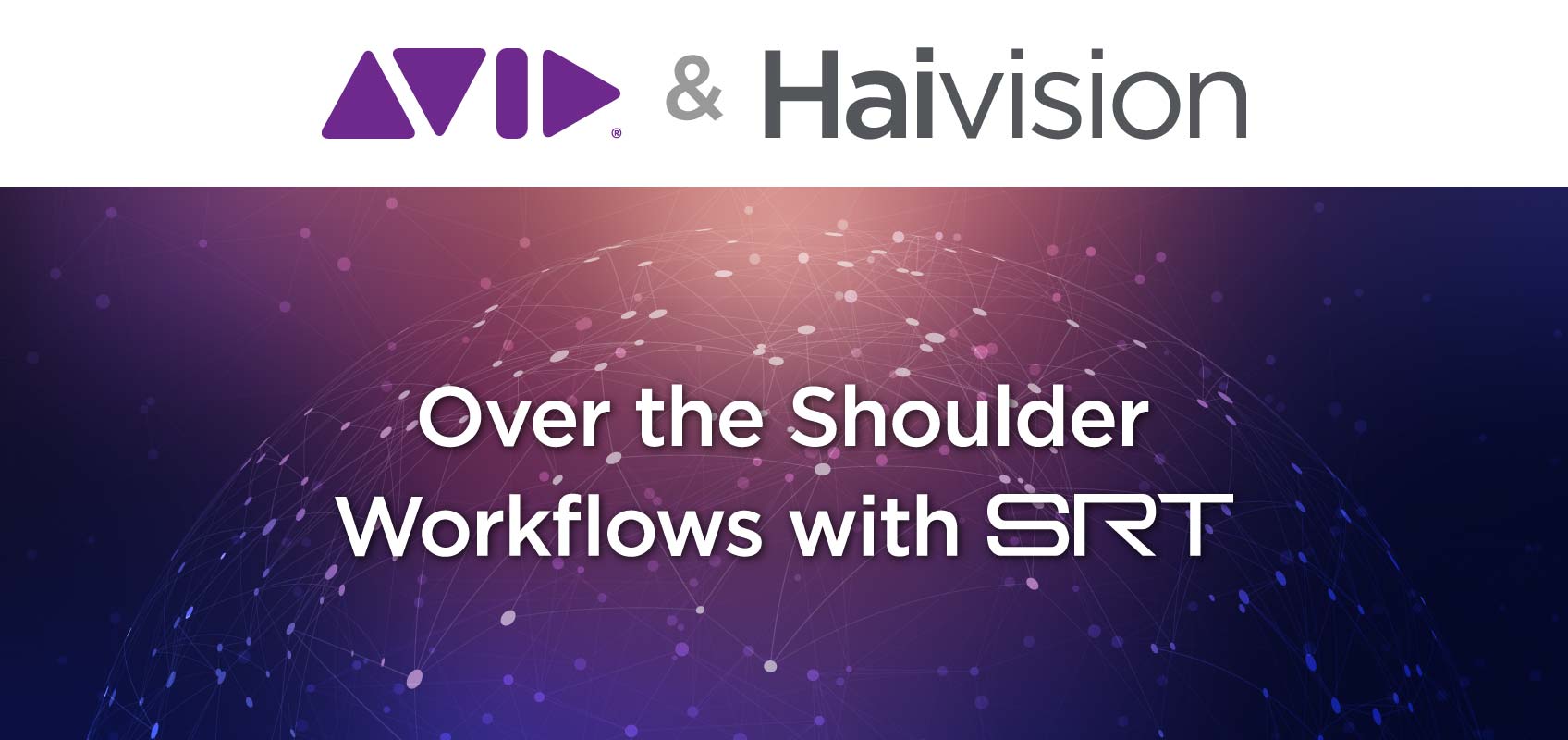It’s been said enough times over the course of the past two years that the global pandemic has caused everyone to change how they work. The lockdowns led to the increasing rise of remote production (REMI) and decentralized workflows in the video streaming industry, forcing everyone to be agile in how they produce video content with teammates unable to be on-premises.
When it comes to live collaboration and production, being set up remotely and apart from one another presented some unique challenges. How could collaborators take advantage of over the shoulder workflows, recreating the interactive, real-time experience of working in a suite together, but with decentralized workflows or social distancing precautions in place?
So, what are over the shoulder workflows and how is the industry leveraging SRT and Haivision solutions to adapt to a remote workforce? Keep reading to find out or watch the full webinar presentation below.
What are Over the Shoulder Workflows?
An over the shoulder workflow is exactly what it sounds like: teamwork between stakeholders viewing the same content with feedback and collaboration occurring in-person with an operator and somebody else standing behind the operator literally watching over the shoulder. With lockdowns in place, much of the workforce was constrained to outside of the office or off-premises, away from one another, and work from home or work from anywhere models began to develop making these kinds of physical, in-person workflows difficult.
The distance between teammates during the lockdowns presented the challenge of how to recreate the over the shoulder experience without a centralized on-premise work environment. It also meant clients or collaborators had limited access to the content, making it harder to review and make changes quickly. Thankfully, the work from home model proved to be a success across the industry, leading to investment in new technologies and capabilities to help employees work better no matter where they are located. These new technologies and workflows have enabled editors to recreate the over the shoulder experience and send their content to those who need it remotely and on a variety of devices.
With some teammates on-premise and others working remotely, creating a set-up that enables real-time collaboration between everyone was a challenge that needed to be overcome. Thankfully, a combined Avid and Haivision solution that’s powered by SRT solves the problem.
How Haivision Solutions Help with Remote Over the Shoulder Workflows
If content needs to reach a single endpoint, encoded video from Avid Media Composer broadcast output can be transported using the SRT open-source protocol to ensure extreme security, low latency, and reliability to one SRT-enabled device including a Makito X4 video decoder, a set-top box like Haivision Play 2000, a mobile device through Haivision’s Play Pro app, or to a VLC player on a desktop or laptop computer.
When content needs to be reviewed by multiple stakeholders, encoder video from Avid Media Composer can be routed and replicated through Haivision SRT Gateway to reach several destinations. SRT Gateway is a scalable and secure solution for routing live video streams to one or multiple destinations and can run on-premise as an appliance or a VM, or in the cloud. SRT Gateway does all the heavy lifting, including firewall traversal and stream replication, before premium content reaches securely its endpoints.
Setting up Your Haivision SRT Gateway for Over the Shoulder Workflows
For over the shoulder workflows, one common set-up that’s used with SRT Gateway is a “Listener-Listener” mode setting. With this setting, SRT Gateway listens for video from an inbound source like Media Composer and pushes it through to the proper endpoints, while on the destination side the SRT Gateway is configured to listen to endpoints pulling in the streams. This enables the destination users to easily and securely receive the content through a “whitelisted” IP address, as the SRT Gateway worries about traversing past firewalls.
All it requires is one administrator, either on-premises or remotely, to configure the routing information from all the incoming sources into SRT Gateway. They could listen to one specific port if needed, limit the number of users in order to accommodate bandwidth limitations, and configure the SRT buffer settings to compensate for the possibility of an unreliable internet connection. SRT Gateway also enables users to encrypt content for protection, ensuring that the only those who are authorized to see unreleased content are able to see it, and to monitor the health of the streams and easily adjust settings if jitter or packet loss cause video quality problems.
Video can be played back on any SRT-enabled device. For example, if one content reviewer is away from their workstation, they can view content with the free Haivision Play Pro app on their mobile device, while another user may watch on a set-top box like a Play 2000 or, in cases where the highest video quality and lowest possible latency is required, on a screen connected to a Makito X4 decoder. This flexibility allows for easy remote collaboration for users that aren’t at a workstation and recreates the in-person experience of an over the shoulder workflow with feedback given in real-time.
Remote Over the Shoulder Workflows are Here to Stay
With both REMI and decentralized workflows now the norm, new solutions and ways of working have made it possible for the industry to carry on creating and producing premium video content during a very difficult time. For those that rely on over the shoulder workflows, a combined Haivision and Avid solution with the SRT protocol and SRT Gateway has made it possible for editors and stakeholders to recreate the on-prem environment and collaborate even when they’re located around the world.

